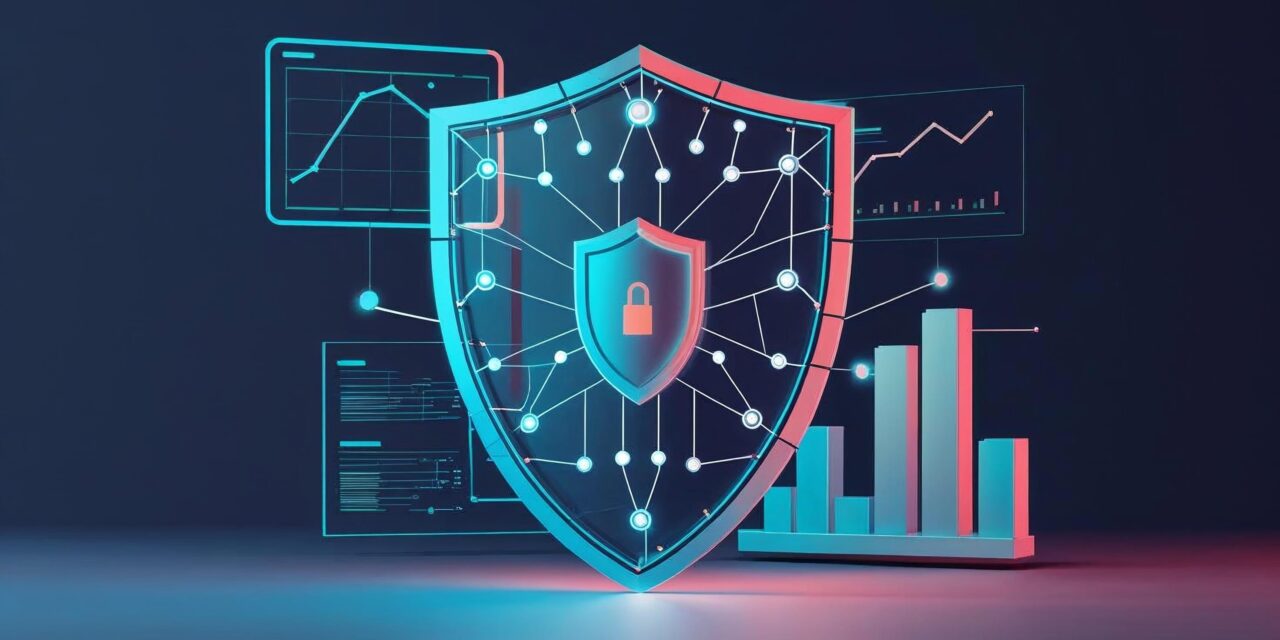Too Busy to Read? We’ve Got You.
Get this blog post’s insights delivered in a quick audio format — all in under 10 minutes.
This audio version covers: Mortgage Broker 5 Step Checklist for cyber security
Cyber Playbook
The Broker’s Ultimate Cyber Survival Playbook
Cybersecurity is no longer just an IT task—it’s a core professional duty. This interactive guide translates complex ASIC expectations into five clear, actionable steps to protect your business, your clients, and your financial services licence.
Step 1: Multi-Factor Authentication (MFA)
This is your digital deadbolt. It adds a crucial second layer of security beyond just your password, and it’s the single most effective step you can take to prevent unauthorized access to your accounts.
99% Less Likely to be Hacked
Enabling MFA is proven to block the vast majority of automated cyberattacks.
Prioritise your most critical accounts. You can do this in 15 minutes.
- Priority 1: Primary Email Account
- Priority 2: CRM & Loan Origination Software
- Priority 3: Business Bank Accounts
- Priority 4: Cloud Storage (OneDrive, Google Drive)
- How: Use an authenticator app like Google Authenticator or Microsoft Authenticator. It’s more secure than SMS.
Enabling MFA is a clear, demonstrable action showing you are implementing “adequate risk management systems” as required by the *Corporations Act*. It proves you are actively protecting client data.
Step 2: Password Management
End the nightmare of forgotten passwords and insecure sticky notes. A password manager is a secure digital vault that creates and stores unique, strong passwords for every account, all protected by a single master password.
The Digital Vault
One Master
Password
Unlocks Your Secure
Password Vault
This system ends password reuse, which is a major vulnerability. It also helps defend against phishing attacks, as the manager won’t autofill credentials on a fake website.
- Choose a Manager: Reputable options include 1Password, Bitwarden, or LastPass.
- Create a Strong Master Password: Use a long passphrase of 4+ random words (e.g., `purple guitar ocean window`).
- Start Migrating: Begin with your high-priority accounts (email, CRM, banking).
Using a password manager demonstrates a structured, systematic approach to credential security. It’s a tangible component of an “adequate risk management system” that moves your practice beyond insecure, ad-hoc methods.
Step 3: Software Updates
Think of updates as free security upgrades. They close the window of opportunity for cybercriminals who exploit known flaws in outdated software. Failing to update is an active invitation for an attack.
Close the Doors on Hackers
Outdated Software
Has Known Flaws
Updates (Patches)
Fix Those Flaws
Many successful cyberattacks, like the infamous WannaCry ransomware, exploited vulnerabilities for which a patch was already available. Staying current is fundamental defence.
Automation is key. Check these settings to ensure your systems protect themselves.
- Operating System: Ensure “Windows Update” or macOS “Software Update” is set to automatic.
- Web Browsers: Chrome, Edge, and Firefox typically update automatically. Confirm this is active.
- Key Applications: Ensure Microsoft 365/Office automatic updates are enabled.
- Unsupported Software: If any software is “end-of-life” and no longer receives updates, it MUST be replaced. It is an unacceptable risk.
Automating updates demonstrates you are managing foreseeable risks. A system failure due to an unpatched vulnerability could be seen as a failure to provide services “efficiently,” a breach of your obligations under s912A(1)(a) of the *Corporations Act*.
Step 4: Data Backups
A reliable backup is your insurance policy against ransomware and other data disasters. If your files are held hostage, you can simply restore from a clean copy, rendering the criminals’ threats powerless.
The 3-2-1 Backup Rule
3
Keep at least THREE copies of your data
(Your live data + 2 backups)
2
Store on TWO different types of media
(e.g., Your PC + an external drive)
1
Keep ONE copy off-site
(e.g., A secure cloud backup service)
- Use True Backup, Not Just Sync: Services like Dropbox/OneDrive sync files. If a file is encrypted by ransomware, the bad version syncs to the cloud. Use a service with versioning that lets you “turn back the clock” (e.g., OneDrive for Business, Google Workspace, Backblaze).
- Automate It: Your backups should run automatically in the background.
- Test It: Once a quarter, try to restore a test file. A backup you can’t restore from is worthless.
A tested backup plan is the definition of cyber resilience. It’s core to your “adequate risk management system.” Proving you can recover from a foreseeable ransomware attack shows you can continue to provide services “efficiently” and meet your obligations to clients during a crisis.
Step 5: Vetting Your Tech Vendors
Your security is only as strong as your weakest link. When you entrust a vendor (like your CRM provider) with client data, you can’t outsource the responsibility. ASIC identifies this “supply chain risk” as a top priority.
Send these essential questions to your critical technology suppliers. A mature vendor will have good answers ready.
1. Data Sovereignty:
“Can you confirm where our client data is physically stored? Do you have policies to ensure it remains within Australia?”
2. Data Security:
“Is our data encrypted both in transit (over the internet) and at rest (on your servers)?”
3. Access Control:
“What are your policies regarding your staff’s access to client data? Do you use role-based access controls?”
4. Security Assurance:
“Do you undergo independent security audits (e.g., ISO 27001, SOC 2)? Can you provide a copy of your certificate or report?”
5. Incident Response:
“In the event of a data breach affecting our data, what is your process and timeline for notifying us?”
Asking these questions and documenting the answers is direct evidence of proactive supply chain risk management. It shows regulators you are not blindly trusting third parties and are taking reasonable steps to verify their security, a key component of your “adequate risk management system.”
The Broker’s Ultimate Cyber Survival Playbook: Your 5-Step Checklist for Security and ASIC Compliance
As a mortgage broker, your day is a constant juggle. Between chasing deals, managing client expectations, and navigating a labyrinth of compliance, finding time to think about cybersecurity can feel like an impossible ask. It’s often seen as just another overwhelming item on an already packed to-do list, a technical problem for an IT department that, for many small brokerages, doesn’t exist. However, the landscape has fundamentally shifted. Basic cyber hygiene is no longer an optional IT task or a “nice-to-have.” It has become a core professional responsibility, with profound implications for your business, your clients, and the very Australian Financial Services Licence (AFSL) that allows you to operate. This isn’t about being an IT expert; it’s about upholding the standard of a professional entrusted with highly sensitive client information.
In This Playbook
- Introduction: More Than Just IT—It’s Your Licence on the Line
- Step 1: Multi-Factor Authentication (MFA) – Your Digital Deadbolt
- Step 2: Password Management – Ending the Post-it Note Nightmare
- Step 3: Software Updates – Closing the Open Windows for Criminals
- Step 4: Data Backups – Your Ransomware Recovery Plan
- Step 5: Vetting Your Tech Vendors – Checking Your Suppliers’ Security
Introduction: More Than Just IT—It’s Your Licence on the Line
The stakes were made crystal clear in the landmark Federal Court ruling in ASIC v RI Advice Group Pty Ltd. In this case, the Australian Securities and Investments Commission (ASIC) successfully argued that a financial services licensee’s failure to maintain adequate cybersecurity measures constituted a breach of its fundamental legal obligations under the Corporations Act 2001. This wasn’t a case about a massive, sophisticated hack; it was about a failure to implement basic, common-sense security controls across its network of authorised representatives.
This ruling established a critical legal precedent: cybersecurity is not separate from your professional duties. It is an integral part of your obligation to provide financial services “efficiently, honestly and fairly” (section 912A(1)(a) of the Act) and to have “adequate risk management systems” in place (section 912A(1)(h)). The court confirmed that in a technical area like cybersecurity, the standard of “adequacy” is measured against what a reasonable expert would recommend. In Australia, that expert benchmark is set by the Australian Cyber Security Centre (ACSC), the government’s lead agency on the matter.
This means that ignoring the foundational guidance from the ACSC is no longer just poor practice—it is a demonstrable failure to meet your legal and regulatory duties. The threat is no longer theoretical; it’s a legal reality with the potential for severe penalties. This guide is designed to be your solution. It cuts through the noise and translates the complex guidance from the ACSC and the dense expectations from ASIC into five clear, non-negotiable, and actionable steps. This is your playbook for protecting your business, safeguarding your clients’ trust, and ensuring your licence is not put at risk by preventable cyber threats.
Step 1: Multi-Factor Authentication (MFA) – Your Digital Deadbolt
In Plain English: What is MFA?
Think of Multi-Factor Authentication (MFA) as adding a digital deadbolt to your front door. It’s no longer enough to have just the key (your password); you also need a unique, one-time code from a separate device to get in. In technical terms, MFA is a security measure that requires two or more different proofs of identity before granting access to an account or system. By requiring a combination of at least two of these, MFA ensures that even if a criminal manages to steal your password, they are stopped in their tracks because they don’t have the second factor—your phone.
Why It’s a Non-Negotiable for Brokers
The data is unequivocal: enabling MFA makes your accounts 99% less likely to be hacked. It is one of the single most effective controls you can implement to prevent unauthorised access to your data and applications. Its power lies in its ability to single-handedly defeat the most common form of cyberattack: the use of stolen passwords in “credential stuffing” attacks, where criminals take lists of breached passwords from one website and try them against others. The ACSC considers MFA one of its top three recommended security measures for every Australian small business and a foundational strategy within its “Essential Eight” framework for cyber resilience. For a broker handling sensitive client financial data, it is not optional; it is the baseline.
Your Action Plan: Where to Enable MFA Right Now
For a time-starved broker, prioritisation is key. Focus on enabling MFA on your most critical accounts first. This is an action you can take in the next 15 minutes that will dramatically improve your security posture.
- Priority 1: Your Primary Email Account. This is the master key to your digital kingdom. If a hacker gains access to your email, they can use the “forgot password” function to reset the credentials for almost all your other services. Securing this account is your absolute first priority.
- Priority 2: Your CRM and Loan Origination Software. This is the heart of your business, containing vast amounts of sensitive client data, from names and addresses to income details and identification documents.
- Priority 3: Your Business Bank Accounts and Financial Portals. This is a direct line to your finances and must be protected with the strongest security available.
- Priority 4: Your Cloud Storage. Services like Microsoft OneDrive, Google Drive, or Dropbox are where you likely store client documents such as payslips, tax returns, and bank statements. These accounts must be locked down.
Step 2: Password Management – Ending the Post-it Note Nightmare
In Plain English: What is a Password Manager?
A password manager is a highly secure digital vault that creates, stores, and automatically fills in a unique, incredibly strong password for every single online account you use. The concept is simple but powerful: instead of trying to remember dozens of different complex passwords—an impossible task for any human—you only need to remember one single, very strong “master password” to unlock the entire vault. The manager does the rest.
Why It’s a Non-Negotiable for Brokers
The reality for any modern professional is “password overload”. This overload leads to dangerously insecure habits, primarily password reuse. Many people use the same one or two passwords across multiple services. This creates a massive vulnerability known as the “domino effect”. A password manager solves this problem by ensuring every account has its own unique, randomly generated, and complex password. Furthermore, using a password manager aligns with modern security guidance from bodies like the ACSC, which now emphasizes password length over forced complexity.
Your Action Plan: Getting Started in 30 Minutes
- Choose a Reputable Manager. There are many excellent options available. Well-regarded services frequently recommended by the cybersecurity community include 1Password, Bitwarden, and LastPass.
- Create Your Master Password. This is the most important password you will ever create. Use the passphrase method: combine at least four random, unrelated words to create a password that is over 14 characters long. For example: purple guitar ocean window.
- Start Migrating Your Passwords. Don’t feel you need to move every password at once. Install the password manager’s browser extension and start with the high-priority accounts listed in the MFA section.
Step 3: Software Updates – Closing the Open Windows for Criminals
In Plain English: What are Software Updates?
Think of your software—your operating system, your web browser, your Office suite—as a house. Over time, the developers who built the house discover potential security flaws, like a broken window lock or a weak point in the door. A software update, or “patch,” is the developer sending you a free, stronger replacement part to install, closing that vulnerability before a burglar can find it. These updates are critical because cybercriminals actively search for and exploit these known weaknesses in outdated software to break into systems.
Your Action Plan: The “Set and Forget” Solution
For a busy broker, manually tracking and installing every update for every piece of software is simply not feasible. The solution is automation. Take these steps to ensure your core systems are set to update automatically:
- Operating System: Check the settings on your computer to ensure automatic updates are enabled. On Windows, this is managed through “Windows Update.” On a Mac, it’s under “Software Update” in System Settings.
- Web Browsers: Modern browsers like Google Chrome, Microsoft Edge, and Mozilla Firefox are designed to update themselves automatically in the background.
- Key Applications: Software suites like Microsoft 365/Office also have automatic update features. Ensure these are turned on to protect against vulnerabilities in programs like Word, Excel, and Outlook.
Step 4: Data Backups – Your Ransomware Recovery Plan
In Plain English: What are Data Backups?
A data backup is simply a copy of your most important information—client files, financial records, emails—that is stored in a separate, safe location. Think of it as a “digital spare key” or an insurance policy for your data. Its purpose is straightforward: if your original data is lost, corrupted, stolen, or, most critically, held hostage by ransomware, you can ignore the threat, restore your files from your clean backup, and get back to business.
Your Action Plan: The Simple 3-2-1 Rule
The industry gold standard for a resilient backup strategy is the 3-2-1 Rule. It’s easy to remember and provides comprehensive protection.
- Keep at least THREE copies of your data.
- Store these copies on TWO different types of media.
- Keep ONE of these copies off-site.
Finally, there is one more crucial step: Test your backups. A backup that you cannot restore from is completely worthless. Once a quarter, you should attempt to restore a non-critical file from your backup system to ensure that it works as expected.
Step 5: Vetting Your Tech Vendors – Checking Your Suppliers’ Security
In Plain English: What is Vendor Vetting?
Think of it this way: when you hire an electrician to work on your house, you check that they are licensed and insured. You are doing your due diligence to ensure they are qualified and that you are protected. Vetting your technology vendors—your CRM provider, your cloud storage service, your IT support company—is the exact same principle. It involves checking their “digital license” to ensure they are handling your sensitive client data with the same level of care that you do. This process is known as managing your “cyber supply chain” because your business’s security is only as strong as its weakest link.
Your Action Plan: A Simple Due Diligence Checklist
Performing due diligence does not need to be an adversarial or complex process. It can start with a simple, professional email to your key technology suppliers. Here are five essential questions that every broker should ask their critical vendors:
- Data Sovereignty: “Can you confirm where our client data is physically stored? Do you have policies in place to ensure it remains within Australia?”
- Data Security: “Is our data encrypted both while being transferred over the internet (in transit) and while it is stored on your servers (at rest)?”
- Access Control: “What are your policies regarding your staff’s access to client data? Do you use role-based access controls to ensure only authorised personnel can view sensitive information based on a business need?”
- Security Assurance: “Do you undergo independent security audits or hold any industry-standard certifications, such as ISO 27001 or a SOC 2 report? If so, can you provide a copy of the certificate or attestation report?”
- Incident Response: “In the event of a data breach on your platform that affects our data, what is your process and timeline for notifying us?”
| Checklist Item | Your Immediate Action | Recommended Tool/Resource | Why It Matters (ASIC Compliance) |
|---|---|---|---|
| Multi-Factor Authentication | Enable MFA on your primary email, CRM, and banking portal today. | Google Authenticator, Microsoft Authenticator, Authy | Protects client data from unauthorized access, demonstrating “adequate risk management” under s912A. |
| Password Management | Sign up for a password manager and create a strong master passphrase. | 1Password, Bitwarden, LastPass | Systematizes credential security, moving beyond ad-hoc methods and strengthening your risk framework. |
| Software Updates | Check that automatic updates are enabled on your computer and web browser. | Windows Update, macOS Software Update | Proactively closes known security gaps, fulfilling the duty to manage foreseeable technology risks efficiently. |
| Data Backups | Implement the 3-2-1 rule using a cloud backup service with versioning. | OneDrive for Business, Google Workspace, dedicated services like Backblaze | Ensures business continuity and data recoverability, a core component of the cyber resilience expected by ASIC. |
| Vetting Tech Vendors | Email your CRM provider with the 5 due diligence questions from this guide. | Your own documented vendor risk assessment | Demonstrates proactive management of third-party and supply chain risk, a key focus area for regulators. |
Conclusion: From Checklist to Confidence
This guide has laid out five non-negotiable steps for your cybersecurity: implementing multi-factor authentication, using a password manager, automating software updates, maintaining robust data backups, and vetting your technology vendors. This is not about transforming you into a cybersecurity expert overnight. It is about embedding a new baseline of professional standards into your daily operations—standards that are essential for protecting your clients, your reputation, and the future of your business.
The core message is that these actions are no longer just about technology; they are about professionalism and compliance. By systematically addressing these five areas, you move from a position of being overwhelmed and uncertain to one of control and confidence. You build a resilient business that can withstand digital threats and, just as importantly, you create a clear, defensible record that demonstrates your commitment to meeting your regulatory obligations.
Take the First Step Today





